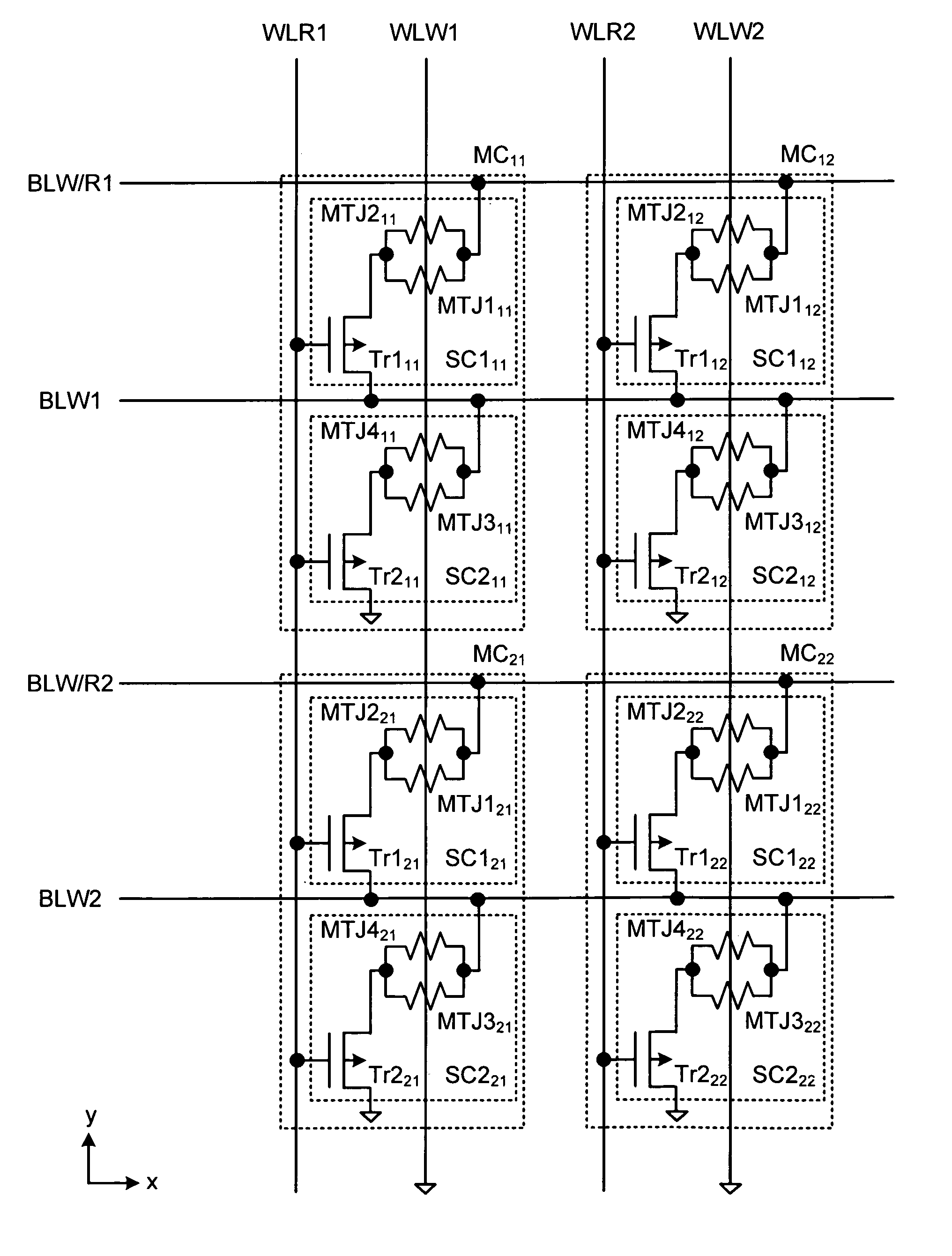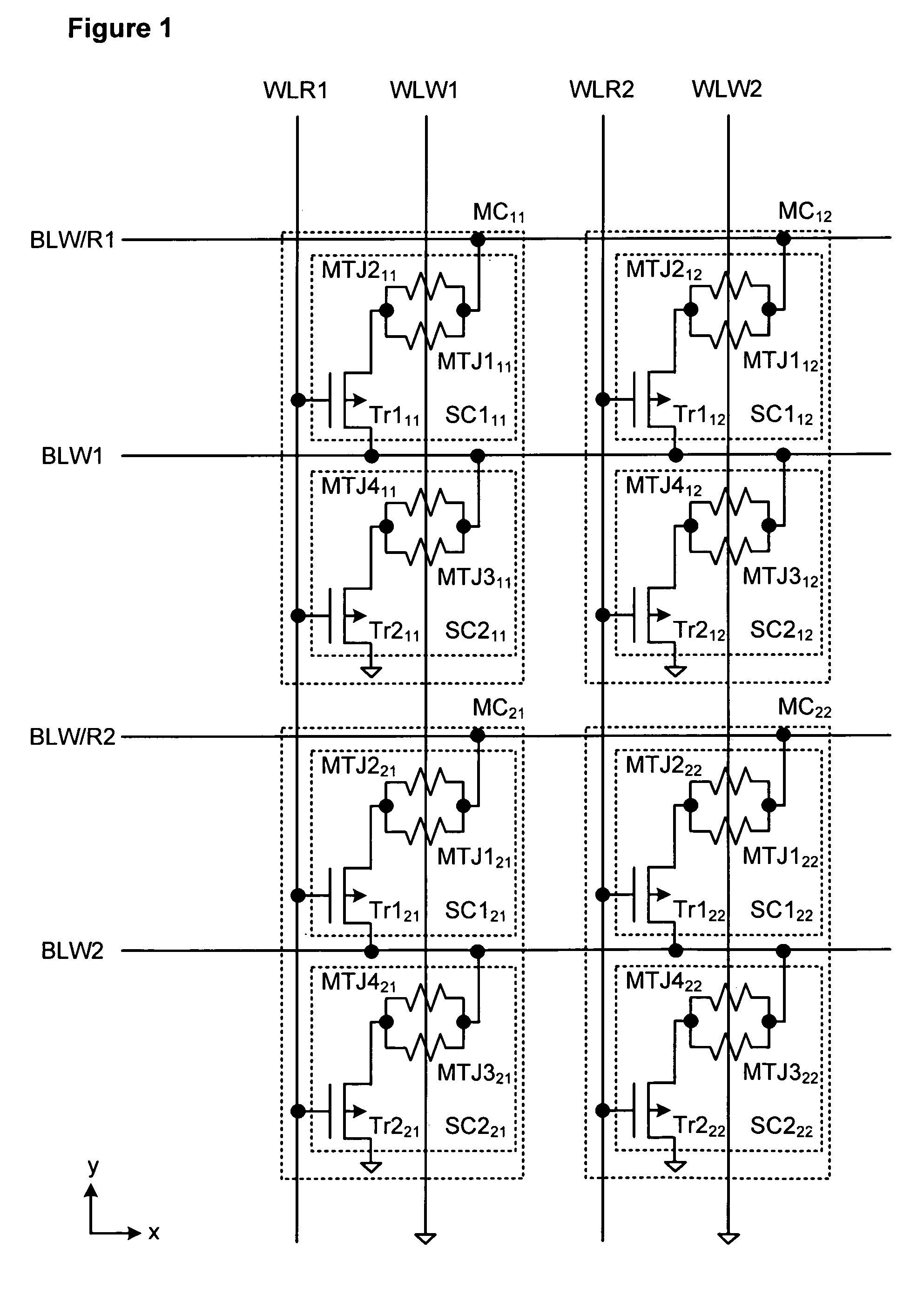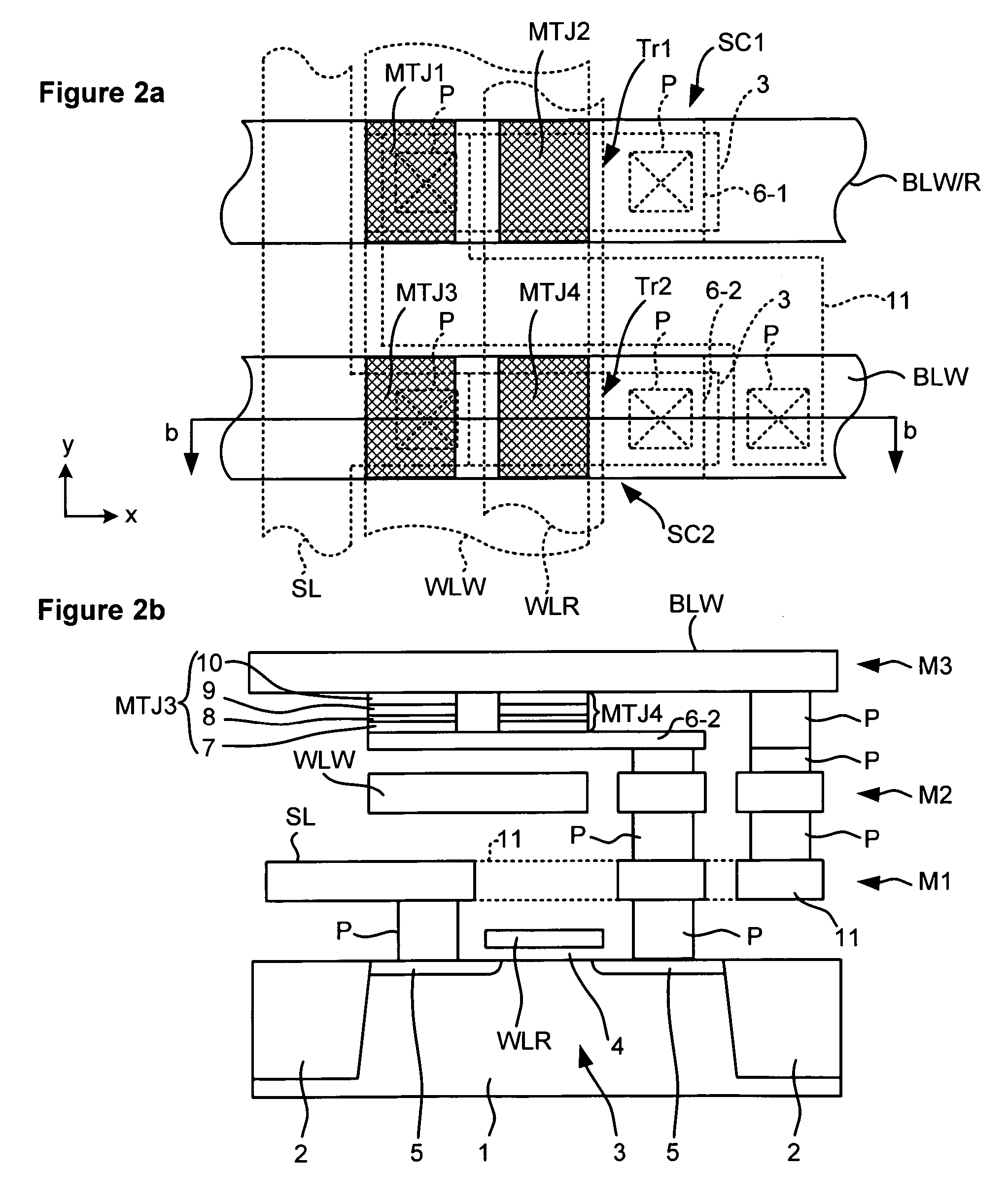Non-volatile memory device
a non-volatile, memory device technology, applied in the direction of digital storage, electric analogue stores, instruments, etc., can solve the problems of low reliability and high integration, low bias-voltage dependence of mr ratio of magneto resistive elements, and reduction of write magnetization variations. , to achieve the effect of improving the reliability of mram recording, reducing the bias-voltage dependence of mr ratio of magneto resistive elements, and high reliability
- Summary
- Abstract
- Description
- Claims
- Application Information
AI Technical Summary
Benefits of technology
Problems solved by technology
Method used
Image
Examples
embodiment 1
[0058]FIG. 3 shows a circuit diagram illustrating a potion of the memory cell area included in an example of a memory device according to another embodiment of the invention. As shown in FIG. 3, the memory device according to the present embodiment has read word lines WLR-1, WLR-2, write word lines WLW-1, WLW-2, and bit line BL. The word line (read word lines WLR-1, WLR-2, and write word lines WLW-1, WLW-2) is formed extending in a first direction (indicated as y direction in the figure). The bit line BL is formed extending in a second direction (indicated as x direction in the figure) nearly perpendicular to the first direction. The memory cells MC are disposed at the intersections of the word lines and the bit line BL. By the way, the numbers given to the bit lines and word lines and the subscripts given to the memory cells and others are in accordance with the same rule as in the
[0059]The memory cell MC includes sub-cells SC1 and SC2. The sub-cell SC1 includes magneto resistive e...
embodiment 2
[0079]FIG. 7 is a plan view illustrating an example of a memory cell according to the present embodiment. MTJ1 and MTJ2 on one hand and MTJ3 and MTJ4 on the other hand are connected in parallel through the local interconnect lines disposed respectively at the tops and bottoms of the elements. Further, similar to the embodiment 2, the serial connection is implemented with local interconnect lines 13, 14 and a plug 15.
[0080]Such a device structure can implement the memory cell MC comprising the circuit shown in FIG. 6. However, the device structure shown in FIG. 7 is strictly for an illustration, and therefore other structures can implement the circuit of FIG. 6. Furthermore, it is natural that the above-described memory cell can make up a memory array when a plurality of the same memory cells are respectively arranged in the x and y directions.
[0081]Next, a method for writing and reading one bit of information to and from the above-described memory cell will be described. When data i...
PUM
 Login to View More
Login to View More Abstract
Description
Claims
Application Information
 Login to View More
Login to View More - R&D
- Intellectual Property
- Life Sciences
- Materials
- Tech Scout
- Unparalleled Data Quality
- Higher Quality Content
- 60% Fewer Hallucinations
Browse by: Latest US Patents, China's latest patents, Technical Efficacy Thesaurus, Application Domain, Technology Topic, Popular Technical Reports.
© 2025 PatSnap. All rights reserved.Legal|Privacy policy|Modern Slavery Act Transparency Statement|Sitemap|About US| Contact US: help@patsnap.com



